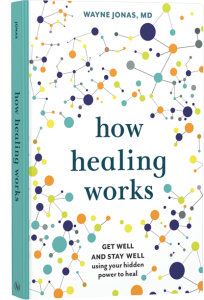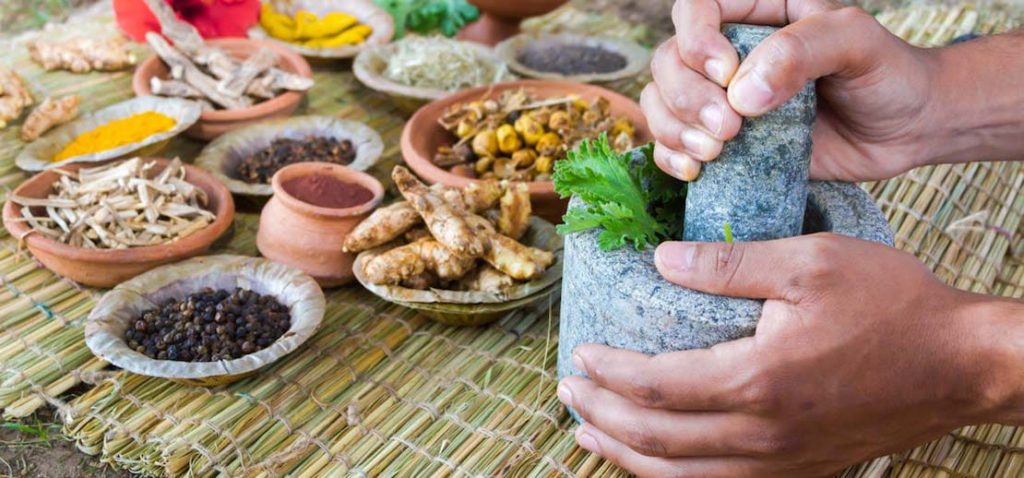While periodic starvation may sound harsh and not healing, studies show the exact opposite—when carefully done. Extensive research on large populations, as well as in controlled studies with animals and humans, shows that periodic low-calorie intake, whether through eating foods with lower caloric density (vegetables and fruits), fasting, or simply removing protein from the diet for short periods of time, rapidly stimulates a number of healing responses.
Would short episodes of fasting and low protein intake increase biochemical mechanisms that preserve and repair damage produced by eating?
To find out, I asked Dr. Mark Mattson, Professor of Neuroscience at Johns Hopkins University and former senior scientist at the National Institute of Aging, part of the NIH. He has been studying effects of diet and fasting on healing and aging for over thirty years. Dr. Mattson is one of the most cited scientists in the world. I asked him, “Could periodic fasting and low-calorie or low-protein intake produce benefit?”
Does Fasting Affect Healing?
Dr. Mattson had a long and detailed answer, but the short version was a definite yes. Eating both nourishes and causes damage in the body. It supports and feeds the body with nutrients, and it stimulates oxidative and inflammatory processes that, over a lifetime, accelerate aging and damage organs. Refraining from food, or certain types of food, both helps heal some diseases and reduces the risk of chronic disease.
Managing the dance between eating and not eating is key to healing and longevity. Periodic fasting (not prolonged starvation), according to Dr. Mattson and other brain researchers, enhances a whole soup of gene and biochemical factors associated with better health, lower disease, and longer life. It also improves mental function and lowers the risk for several diseases of aging, including diabetes, heart disease, brain decline, and cancer.
“The problem,” Aadi, a patient suffering from Parkinson’s who was practicing periodic fasting, readily admitted, “is that it was hard to keep up these behaviors once I left the hospital. Outside I relied more on supplements and herbs.” But, he concluded, “they were not as powerful as what I got at the hospital. That is why I come back every year or so for a booster.” Then he asked me, “So what did you find out about these treatments? Is there any science to them, or are they all just magic?”
How Stimuli Can Heal Us
They were not magic, but they were also not proven with the science of the small and particular. Were the potions and pills he was given specific treatments for Parkinson’s disease? Not likely, I thought, given what I had seen about both drug and herbal research for Parkinson’s. But from a whole systems science perspective, the rationale of these treatments made a lot of sense. Most of the herbs Aadi was given had anti-inflammatory effects, as did spices in his food. One, a powder from a tropical legume, Mucuna pruriens, had been studied for its effect on the level of L-dopamine in the brain, but the amount was too little to produce the magnitude of improvement he had experienced.

As I pieced together the various approaches Aadi underwent during his stay at the ayurveda hospital, it became clear that the most likely explanation for his recovery involved the same factors that had healed other certain patients—just differently organized and in a different context. These had helped Aadi find meaning in his life, even though he did not believe in astrology or Hindu gods. The space and time to reflect, think, and talk; his improved sleep; and no alcohol all helped him gain insight and grow new brain cells. This helped him discover meaning and guide him toward recovery. He exercised more, and his nutrition improved with the plant-based diet and spices. More omega-3 and omega-6 fatty acids from the oil massage reduced the inflammation in his brain and nourished his neurons. The herbs and supplements increased his dopamine level— although mostly through the placebo effect from simply taking them.
Finally, numerous methods for regularly stimulating a healing response with low-dose stressors were administered. Yoga, fasting, cathartics, massage, heat, and enemas were given rhythmically to keep up a steady response. From a whole systems perspective, these small challenges induce stress proteins and genes that our bodies use to repair and defend itself. These were the nudges to his whole system that induced healing.
Whole Systems Science
The problem with the ayurveda system is that the practitioners do not know if what they are doing is, in fact, properly dosed or delivered. While I discovered several healing approaches with factors that could enhance healing, the effects of these treatments were not measured or tracked, except for the patients’ subjective reports. No modern science had been applied to them. Of course, that does not mean this science can’t be done.
Recently a growing number of studies have looked at the intersection of whole systems science and traditional medical systems. An example of this growing intersection is a course taught at Harvard and the Massachusetts Institute of Technology by Dr. V.A. Shiva Ayyadurai, CEO of a systems science company called CytoSolve. The course examines the relationship of whole systems science and ayurveda. Clinical verification of these concepts is also beginning. A 2016 study by researchers at the University of California, San Diego, examined more than fifty metabolic pathways altered by a six-day course of treatment using ayurveda approaches like those Aadi had received.
In condition after condition, system after system, and person after person, I found three common factors that induced healing:
- The rituals that helped a person have a meaningful experience
- The support of the whole person
- The regular stimulation of a biological response
The specific treatments and agents used varied by person, culture, theory, and place, but the processes were the same. Whole systems science showed us that a person is an ecosystem, more like a garden to be cultivated than a car to be fixed. In systems science, the safest and greatest effects occur when the whole person is nudged toward a meaning response, using the universal need to maintain dynamic stability as the healing force. By taking advantage of this force, health and resilience emerge.
How Healing Works
Healing emerges when we support and strengthen the connections within us—body, behavior, social, and spirit—making us more whole. Using the science of the large and the whole, we now understand that both healing and wholeness involve the same process and that inducing a meaning response enables both.
Whole systems science, the biopsychosocial model, and the meaning response also allow us to personalize healing responses in precise ways using almost any agent or behavior. This understanding opens new worlds of opportunity. Treatments usually dismissed—because they do not fit the science of the small and particular—now become available for effective use in a new way. We know that both before and after a diagnosis, and between states of health and disease, there are health-promoting conditions and actions that can prevent, slow, or reverse chronic disease, strengthen overall health, improve function and quality of life, and enhance overall resilience and well-being. We can reduce suffering, regardless of a person’s illness or stage of life, provided our behaviors are meaningful, they support and nourish us, and we challenge ourselves to respond.
This is how healing works.
Adapted and reprinted with permission from How Healing Works: Get Well and Stay Well Using Your Hidden Power to Heal by Wayne Jonas, MD, copyright ©2018. Published by Lorena Jones Books, an imprint of Penguin Random House LLC.
This blog post was originally published in July of 2018 and has been updated and optimized.
 Take Your Health Into Your Own Hands
Take Your Health Into Your Own Hands
Drawing on 40 years of research and patient care, Dr. Wayne Jonas explains how 80 percent of healing occurs organically and how to activate the healing process.

